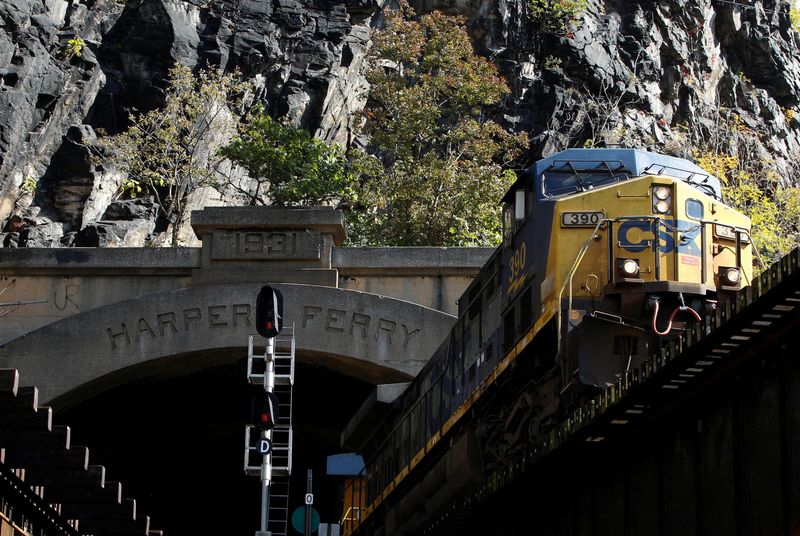By Lisa Baertlein
ATLANTA (Reuters) - CSX (NASDAQ:CSX) this week will return to normal coal export operations at the Port of Baltimore after work crews cleared part of the deep channel serving the second busiest U.S. trade hub for outgoing coal shipments, the railroad's CEO said on Wednesday.
CSX is scheduled to receive and load the first large ship at its Curtis Bay coal terminal on Saturday, Joe Hinrichs, CSX's CEO said at the Reuters Supply Chain conference in Atlanta.
"We're now starting to load trains at a regular pace" to support normalizing coal operations, Hinrichs said.
For the last 10 days, the railroad has been loading coal on small ships that used smaller channels at the port, the CEO added.
CSX also serves CONSOL Energy (NYSE:CEIX)'s Baltimore Marine coal terminal, along with rival Norfolk Southern (NYSE:NSC).
Baltimore accounted for 28% of coal exports in 2023, according to the U.S. Energy Information Administration (EIA).
Earlier this week, work crews refloated and moved the Dali container ship that crashed into the Francis Scott Key Bridge on March 26, causing its collapse. The accident paralyzed trade at the port that specializes in coal, finished automobiles and other goods.
Hinrichs said CSX correctly estimated losses from the accident in April, when it forecast that the port closure could result in the railroad losing $25 million to $30 million per month in coal revenue.
Based on updated export data, success rerouting coal shipments to alternate ports and progress resuming trade via Baltimore, the EIA earlier this month revised its 2024 coal export forecast up from its preliminary outlook issued last month.

The May EIA forecast calls for 2024 coal exports to fall 1.1% versus 2023. In early April, the agency forecast a 5.3% decline.
The EIA's March outlook, issued before the bridge collapse, called for growth of about 1% this year.